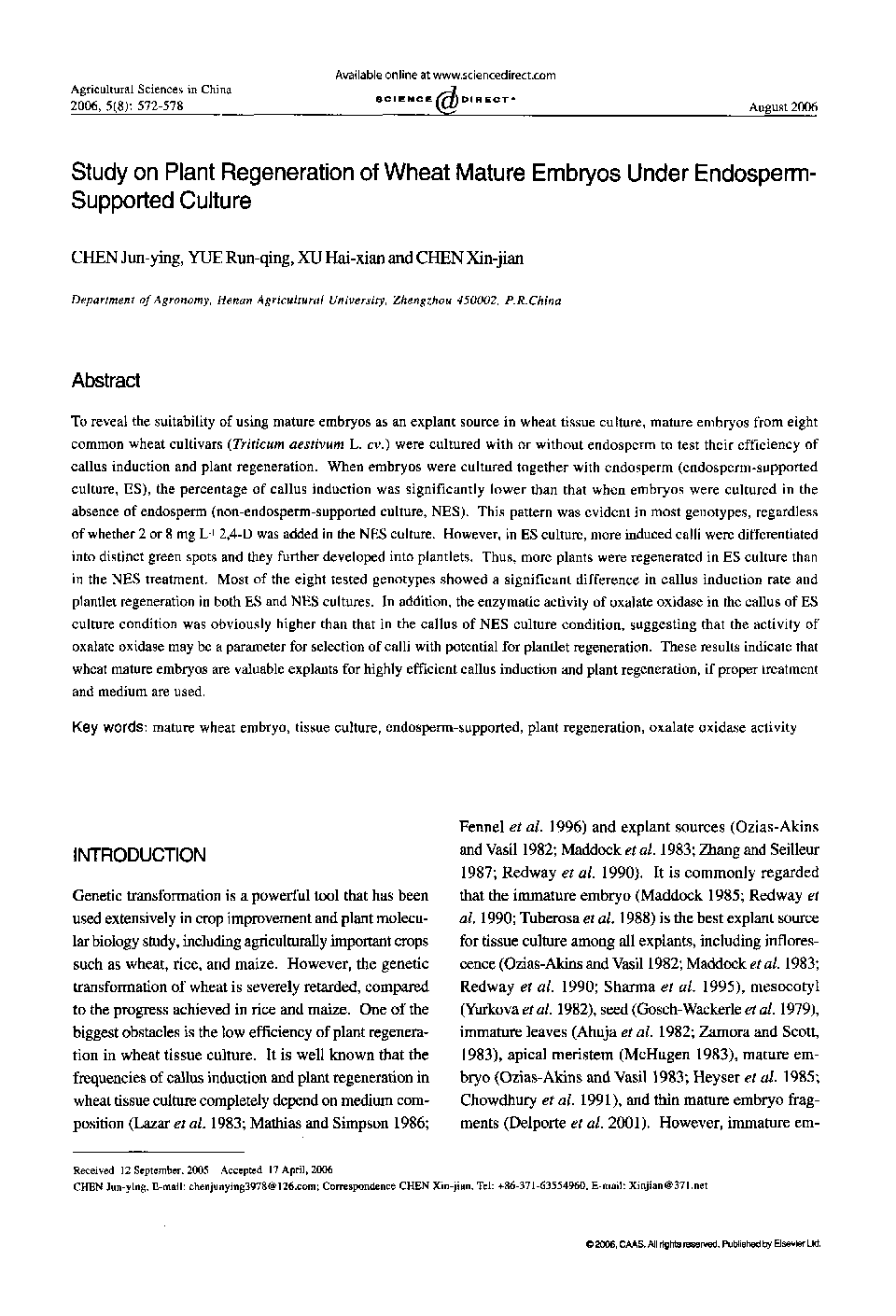| Article ID | Journal | Published Year | Pages | File Type |
|---|---|---|---|---|
| 4491002 | Agricultural Sciences in China | 2006 | 7 Pages |
To reveal the suitability of using mature embryos as an explant source in wheat tissue culture, mature embryos from eight common wheat cultivars (Triticum aestivum L. cv.) were cultured with or without endosperm to test their efficiency of callus induction and plant regeneration. When embryos were cultured together with endosperm (endosperm-supported culture, ES), the percentage of callus induction was significantly lower than that when embryos were cultured in the absence of endosperm (non-endosperm-supported culture, NES). This pattern was evident in most genotypes, regardless of whether 2 or 8 mg L−1 2,4-D was added in the NES culture. However, in ES culture, more induced calli were differentiated into distinct green spots and they further developed into plantlets. Thus, more plants were regenerated in ES culture than in the NES treatment. Most of the eight tested genotypes showed a significant difference in callus induction rate and plantlet regeneration in both ES and NES cultures. In addition, the enzymatic activity of oxalate oxidase in the callus of ES culture condition was obviously higher than that in the callus of NES culture condition, suggesting that the activity of oxalate oxidase may be a parameter for selection of calli with potential for plantlet regeneration. These results indicate that wheat mature embryos are valuable explants for highly efficient callus induction and plant regeneration, if proper treatment and medium are used.
